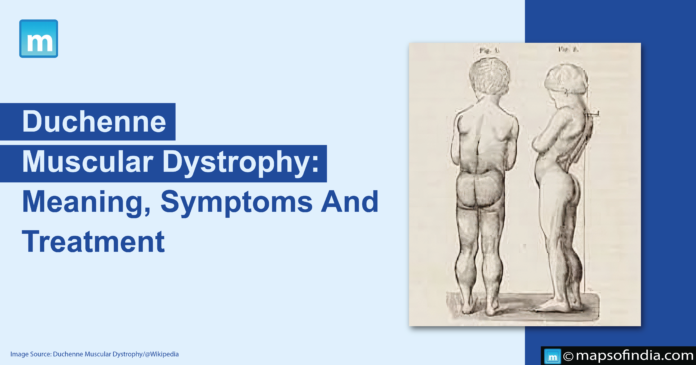Duchenne Muscular Dystrophy (DMD) is a severe type of muscular dystrophy primarily affecting boys. At early ages, muscle weakness begins, and it worsens with time. In this, muscle loss typically occurs in the thighs and pelvis, which is followed by arms. The fat content increases, due to which the affected muscles may look more significant. Most of the affected people are unable to walk. Another common thing is scoliosis.
It is the most common type of muscular dystrophy, which is caused by weakness due to alterations of proteins and muscle degeneration. Dystrophin helps to keep the muscle cells intact. This reduces bone density, and people suffering from it have the risk of developing fractures. People who develop it have a high creatine kinase level in their blood. Those who have weakness of breathing muscles may require assisted ventilation.
Signs and symptoms of DMD
- Progressive muscle weakness is caused due to muscle fibre death, disarray, and replacement with connective tissue or fat.
- The voluntary muscles are affected. First, this includes pelvic, hips, calves and thigh muscles.
- The effect eventually progresses to the neck and shoulders, followed by respiratory shoulders, arms, and other areas.
- Fatigue is a common symptom.
- Awkward walking, stepping, or running occurs due to general motor skill difficulties.
- Frequent falls are caused due to difficulty in walking.
- There is occasional development of arrhythmia (irregular heartbeat) or congestive heart failure.
- In the late stages of the disease, swallowing and respiratory impairment can occur, resulting in pneumonia.
- A sign of DMD is trouble getting up from sitting and lying, as manifested by a positive Gower’s sign.
- Pseudohypertrophy of the muscles of the calves, buttocks, tongue, and shoulders is another symptom of DMD.
- Muscle contractures of the Achilles tendon and hamstrings and muscle fibre deformities can occur.
- Skeletal deformities and non-musculoskeletal manifestations of DMD can occur.
Treatment of DMD
Until now, no treatment for DMD has been found, and an ongoing medical need got recognized. Gene therapy is one option that has shown some success in the field. Treatment is done to maximize the quality of life. Different measures that can be taken are:
- For short-term muscle strength improvement, corticosteroids such as deflazacort and prednisolone can be used.
- Inactivity can worsen muscle disease, for which mild, non-jarring physical activities are encouraged.
- Physical therapy helps maintain muscle strength, function, and flexibility.
- Orthopaedic appliances may improve the ability for self-care and mobility.
- A pacemaker may be required for cardiac problems.
- Physical therapy aims to minimize the development of deformity by developing a program of exercises and stretches where appropriate.
AIIMS Jodhpur and IIT Jodhpur, Dystrophy Annihilation Research Trust, are working together to develop an affordable treatment for DMD.




